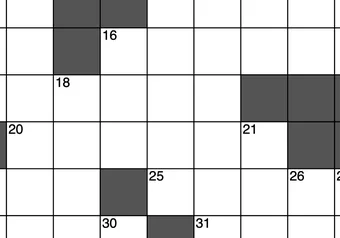In case you haven’t realized it yet, a lot of people go to UBC.
Just under 68,000 students are spread across UBC’s campuses, and over 70,000 prospective students completed applications to attend the university last year.
UBC releases an annual enrolment report each year that provides demographic details about the people who apply to the university and the students it admits. This data includes admission rates, demographic details, retention rates and other interesting tidbits.
For this year’s enrolment report, which was released in January, The Ubyssey has decided to visualize some of the most notable information within it.
How many students go to UBC?
UBC has a total of 67,958 students. 57,250 of them attend UBC’s Vancouver campus (UBCV), while 10,708 go to UBC’s Okanagan campus (UBCO) in Kelowna. The majority of students at both campuses are undergraduates.
How many people applied to UBC last year?
UBC received 41,875 completed applications for its undergraduate programs last year, but only 54 per cent of applicants received an offer of acceptance into their preferred program.
The admission rates for undergraduate students — meaning the percentage of students accepted into their first program choice — vary quite widely, depending on which campus someone is applying to and whether they’re a domestic or international student.
Domestic students have an admission rate of 58 per cent for UBCV and 74 per cent for UBCO. In contrast, international students have admission rates of 44 per cent in Vancouver and 71 per cent for the Okanagan.
For graduate students, admission rates to UBC are much tighter. 23,398 prospective grad students applied to UBC, but only 25 per cent received admission offers.
41 per cent of domestic students and 16 per cent of international students applying to grad programs at UBCV were accepted. At UBCO, these rates are 56 per cent and 14 per cent, respectively.
It’s worth noting that not everyone who receives an offer to attend UBC ends up registering in courses. Only 51 per cent of undergraduate applicants who got into their preferred program actually accepted their offer of admission, and 13 per cent of those students did not even end up registering in courses.
Additionally, the enrolment report notes that domestic and international students technically “do not compete” for the same seats, as both groups are assessed in separate applicant pools. The provincial government also provides UBC with funding for a set number of full-time domestic students each year — however, the university generally enrols more full-time domestic students than they’re funded for.
What’s the average for incoming first-year students at UBC?
The mean grade range for incoming first-year students during their senior year of high school was 90–92 per cent in Vancouver and 86–88 per cent in the Okanagan.
How many domestic and international students does UBC have?
Domestic students make up a significant majority at UBC, comprising 73 per cent of students across both campuses. However, the amount of international students at UBC is increasing at a much quicker rate than that of domestic students.
While the number of domestic students across both campuses has increased by 3.7 per cent since the 2015/16 school year, the amount of international students has increased by 38.6 per cent.
Where do incoming UBC students come from?
Most new students at UBC previously attended secondary school or another post-secondary institution in BC before coming to UBC in 2019.
Among new undergraduate students who previously attended an educational institution in Canada, 83 per cent of UBCV students and 72 per cent of UBCO students went to a BC school before studying at UBC.
Students who previously studied in Ontario and Alberta also make up a significant chunk of new UBC students. Interestingly, despite being the second most-populous province in Canada, less than one per cent of new UBC students previously attended an educational institution in Quebec.
Where do UBC’s international students come from?
The largest share of international students at UBC are from China, but a significant amount are also from India or the United States.
The enrolment report also provides data on the growth of international students from countries that have many students studying at UBC. Since 2015, the number of students with Indian citizenship has grown by 216 per cent for undergraduates and 93 per cent for graduates. The amount of international students from China has grown by 56 per cent while the number of international students from the US has grown by 11 per cent.
How many Indigenous students go to UBC?
UBC has 1,856 self-identified Aboriginal students in total — 1,207 at the Vancouver campus and 649 at the Okanagan campus. They represent 2.1 per cent of the total population of UBCV students and 6.1 per cent of UBCO students.
The university uses ‘Aboriginal’ rather than ‘Indigenous’ to refer to First Nations, Métis and Inuit students from Canada in order to align its language with Section 35(2) of the Canadian Constitution.
The amount of Aboriginal students at UBC has grown by 20 per cent since 2015. However, this rate is growing much faster in the Okanagan — the amount of Aboriginal students at UBCO has increased by 41 per cent since 2015, whereas it has only increased by 10 per cent in Vancouver.
What are the retention and completion rates among UBC students?
UBC has an overall undergraduate retention rate of 91 per cent, meaning the amount of full-time first-year students who progress onto their second year of university.
However, a smaller share of first-year students actually go on to complete their degrees. For example, only 79 per cent of domestic students who began their studies at UBC’s Vancouver campus in the 2013/14 school year completed their degrees within six years. The degree completion rate for Aboriginal students is also disproportionately lower than the rate for domestic and international students.
Share this article
First online





